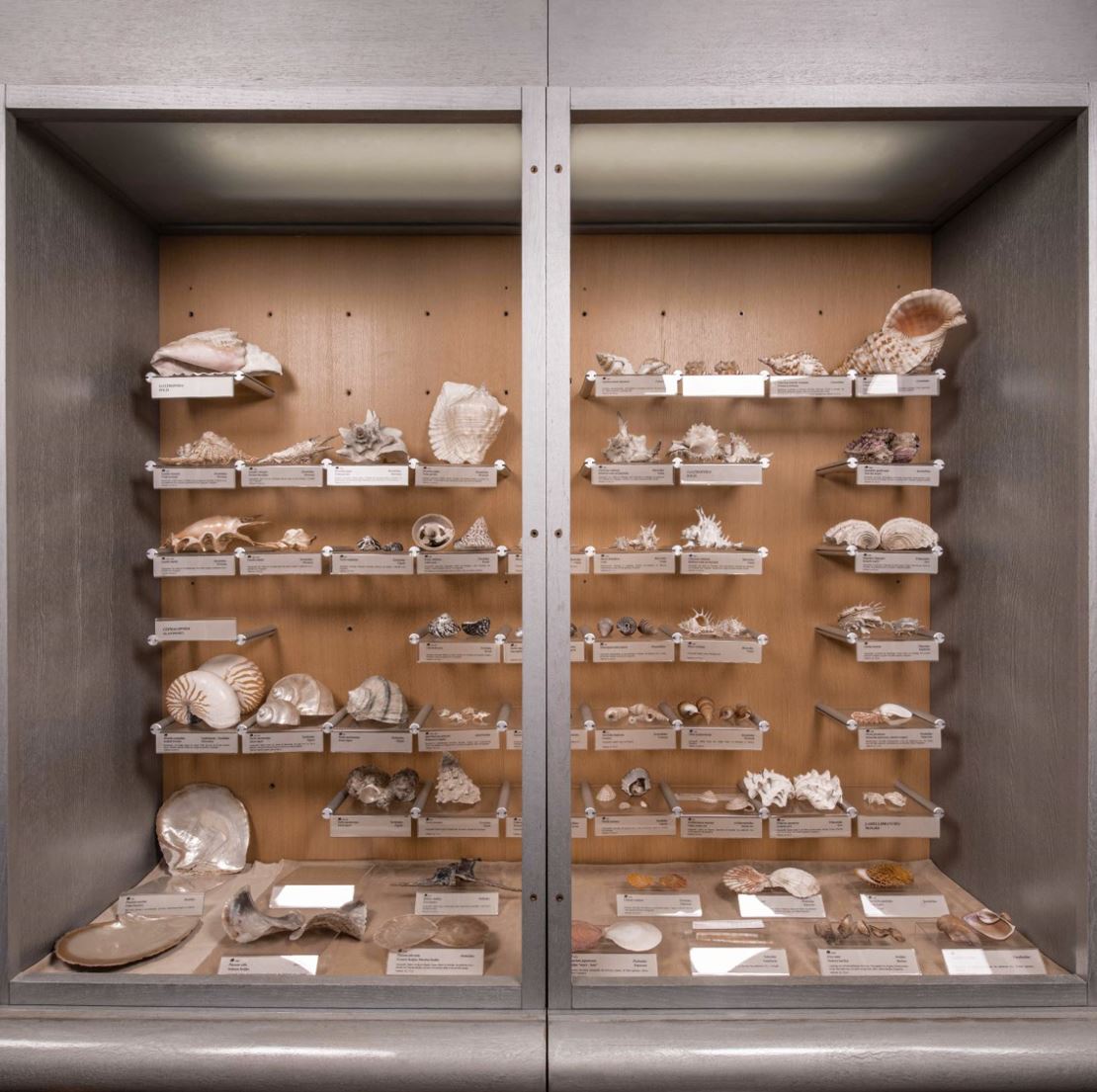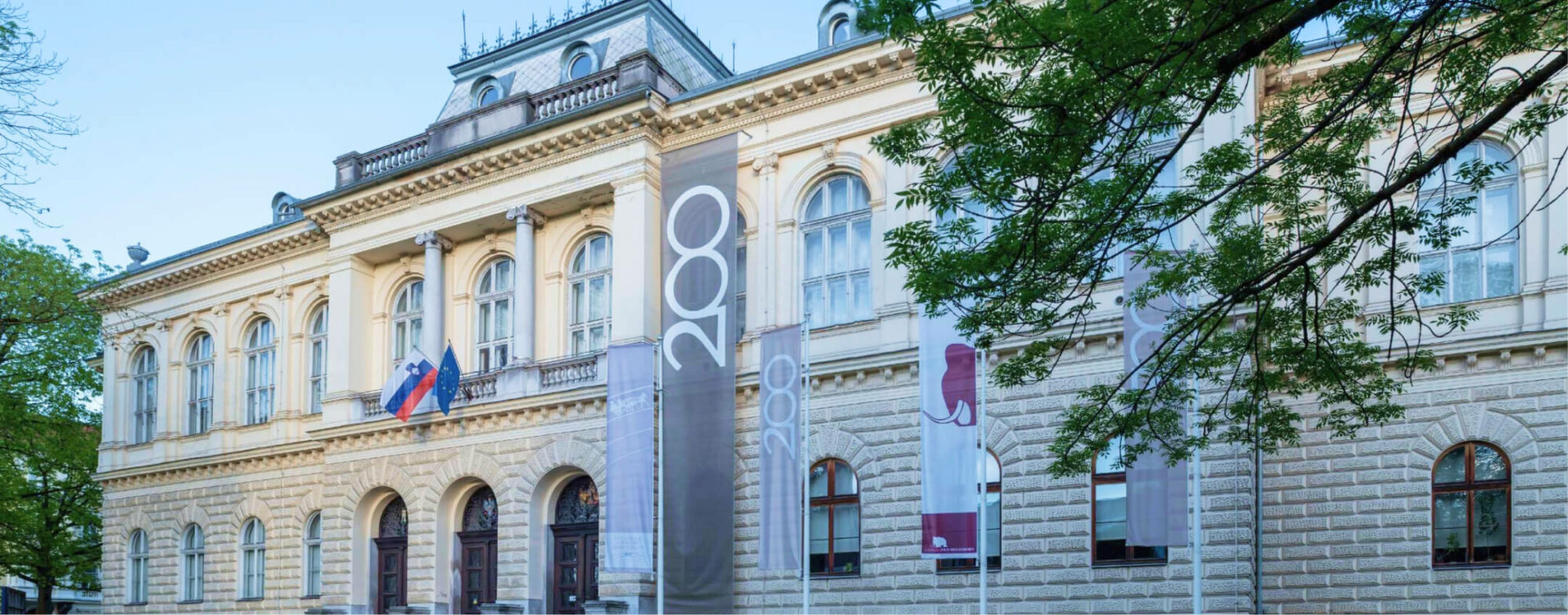In the exhibition corridor in front of us stand two large display cases with several attractive and interestingly formed snail and bivalve shells. This is part of the collection that Count Franc Hohenwart donated, as the president of the museum’s curatorship, to the Carniola Regional Museum in 1831. It comprises about 5,000 specimens from all over the globe and is, apart from the Zois collection of minerals, one of the fundamental collections of the Slovenian Museum of Natural History.
Molluscs form a large group of invertebrates including chitons, snails, scaphopods or toothed snails, bivalves and cephalopods. Currently, about 128,000 species of molluscs are known in the world, around 105,000 of which are snail and approximately 20,000 bivalve species.
The distribution of molluscs is subject to climate, temperature, sea currents, water depth, salinity, soil composition, form of reproduction, and other factors. Individual kindred species inhabit different zoogeographic areas. Hohenwart’s collection contains predominantly the specimens from the Indo-Pacific region.
Even though all of the exhibited specimens are worthy of our attention, let us make a special mention of the shell of the nautilus. It is kept in the left display case, bottom left. This marine mollusc is currently the only living cephalopod with external shell. Its relatives are the already extinct ammonites, the still-living and well-known squid, cuttlefish and octopus. The nautilus inhabits the Indian Ocean. Below it is the pearlymussel, which used to be collected in the wild for its wonderful pearls and mother-of-pearl. As a result, it was nearly exterminated in some places. Currently, mussels are grown largely in Japan, in captivity, and are artificially stimulated to form pearls. At the same time, let us mention that a pearl can be formed in any shell that has adequately developed nacre. When a foreign object – a little stone or the egg of a parasite – gets stuck between its shells – the shell surrounds it with nacre. No wonder, therefore, that in 1864 a well-known Slovenian naturalist and collector found a thick shelled river mussel with a pearl in a stream near Borovnica. Pearls, however, are no exception even with oysters, Mediterranean mussels and great scallops.
Let us also mention snail shells from the tiger cowrie group. We can see several different species in the right display case, bottom right. They are brown and white in colour and are reminiscent of porcelain. The last, largest whorl overlaps all others. When the tiger cowrie is still alive, its beautiful shell is covered by a mantle covered by a number of warty, finger-like and thorny growths. It is in fact this mantle that secretes the porcelain-like substance. Tiger cowries have always been highly popular with collectors, while some smaller species of this snail shell were once used as money. In the Adriatic Sea, four different tiger cowrie species can be found.

Photo: David Kunc
To the left of the tiger cowries are the shells of snails, called abalones, furnished with mother-of-pearls. It is not difficult to recognize them, as their shape truly resembles a human ear. Abalones live clinging to the rocks, exchanging water through little holes on the side of their shells. Their meat is very tasty. The waters of Japan are inhabited by a species that can grow to such an extent that a single specimen suffices to feed a small family. Many species, however, are at great risk of becoming extinct due to overharvesting.
The Adriatic Sea, too, is inhabited by the abalone’s representative, called Peter’s ear or St. Peter’s ear. This, however, is just a small snail that lives in the rocky coastal strip. It occurs only individually and plays no major role in people’s diet.
For more information head to Invertebrates Collection – Historical collections.


